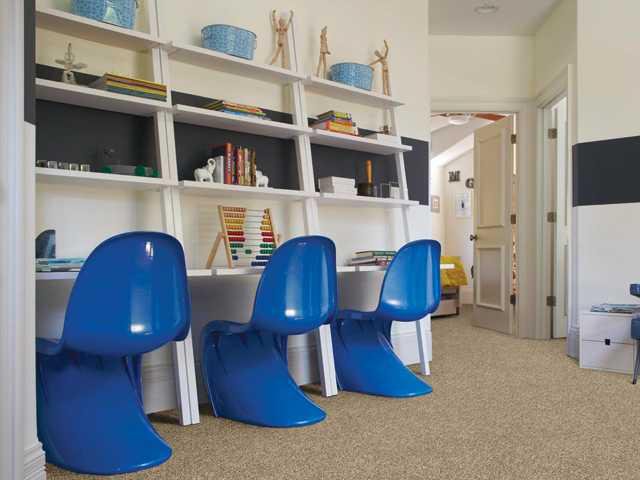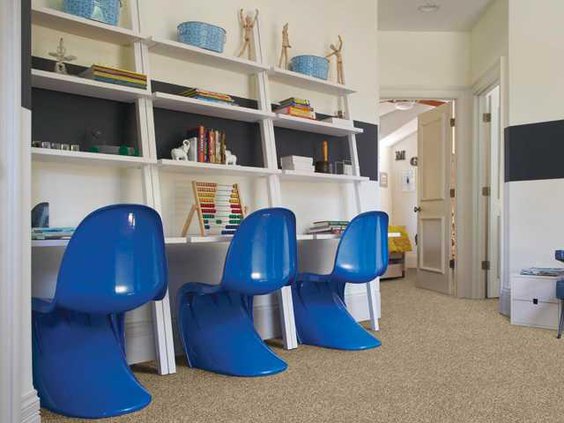Would a great study space ease your child’s transition from summer to school? Perhaps an awesome lounge area could convince your teens - and all their friends - that your house is the best hangout spot ever. Whatever your objectives, a few design and decorating tricks can help you create a kid-friendly space in your home.
The basics of good design that make grown-up spaces appealing also work for children’s spaces. When designing a kid-friendly room, however, it’s important to keep in mind not only the purpose of the room (study, fun, sleep, etc.) but the age of the occupant, his or her interests as well as incorporating fun into the design. Here are some tips to get you started:
Consider creating a theme. Kids of all ages love themes. To decide which one might be right for your project, consider things your child has shown an enduring interest in. For example, she may be into princesses right now and hate the theme next year. On the other hand, if she’s always loved the color pink and has a passion for animals, those elements could be worked into a theme that she’ll appreciate for years to come.
Choose flooring that fulfills multiple needs. Carpeting absorbs sound (for when kids play loud video games or music) and is comfortable for youngsters who like to sit or lie on the floor while they do homework, read, watch TV or socialize. What’s more, it’s available in virtually every hue and pattern imaginable, ensuring you’ll find something that appeals to both your design sense and your child’s tastes. Stain-resistant formulas and durable fibers ensure modern carpeting can stand up to the rigors of use in a child’s room. And, according to the Carpet & Rug Institute, properly cleaned carpet can maintain indoor air quality, making it a viable choice for families impacted by asthma and allergies. To learn more about carpet, visit www.carpet-rug.org.
A child’s space needs layers of lighting, just as adult spaces do. As you’re choosing lighting, keep in mind how your child will use the room. If he will be doing homework, task lighting and desk lights will illuminate study areas. Will the room be a movie room or a “hangout” for older teens? Recessed and dimmable lighting may be appropriate. Don’t forget to include natural light in your illumination plans. Avoid heavy drapery. Instead, opt for bright colors and lightweight materials for window treatments so windows admit ample light. If you have a larger budget, consider adding a skylight to provide light while preserving privacy.
Organization is key in a child’s room, and ample storage facilitates good organization. Depending on the size of the room and how it will be used, shelving, portable cubes, book cases and other furnishings can provide plenty of storage space. For desks, look for desktop organizers that will keep important papers and supplies tidy and close at hand. By helping kids stay organized now, you’ll be laying the foundation for a lifetime of good organizational skills.
Remember the fun factor. Whatever the purpose of a child’s room, fun should be a universal ingredient. You can infuse fun in a room in many ways, from creating a video game center for lounge rooms to choosing colorful, texturally appealing carpeting for a bedroom. A touch of whimsy, such as a swing hung from the ceiling or a wall mural of your child’s favorite cartoon character, can produce smiles every time kids see them.
With some creativity and the right decorating materials, it’s possible to create a space that will make children comfortable, happy and ready to tackle the new school year.
Keep them happy & studying: Creating a kid-friendly space




